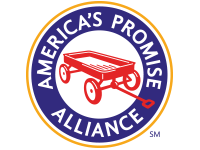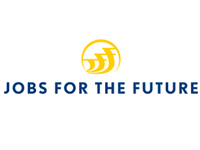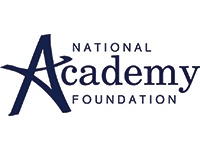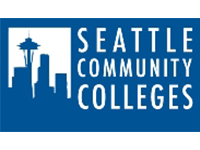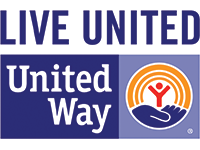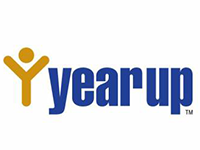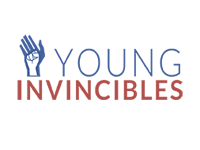Starbucks is rounding up employers to hire America’s “lost generation”
 •
•
It’s hard to underestimate the challenges faced by the 5.5 million Americans between 16 and 24 years old who aren’t in school and aren’t working. They’re disproportionately non-white, overwhelmingly poor, live far away from large employers and often have their own kids to take care of.
Over the past few years, attention and resources have poured into helping these “disconnected” youth, as they’re often called — there’s a White House initiative, a wealth of reports, a massive coalition of non-profits and foundations devoted to figuring out how to help. And the number of disconnected youth has fallen since the height of the recession.
Still youth unemployment remains far above average. With nothing to put down on the “work experience” section of a resume, they’re rarely taken seriously in a stack of applications from more qualified candidates — so even with training and support, they may never get that first crack at a steady job, which can hold them back for life.
Now the private sector is getting ready to hire those disconnected early adults proactively. Led by a $30 million investment from Starbucks CEO Howard Schultz, 17 major companies have committed to providing jobs, internships and apprenticeships to 100,000 “opportunity youth,” as they’re calling them. It’s the first coordinated, substantial engagement by employers willing to use their own payrolls as a part of the solution.
“One of the missing pieces is really that you have to align these training and skill development opportunities to the labor market,” says Daniel Pitasky, executive director of the Schultz Family Foundation. In studying what they could do to make an impact, they found that the one-off business partnerships weren’t enough. “There wasn’t enough scale. Training and hiring opportunities were making a dent, but it was really clear that we needed to think bigger tent.”
Companies signed up to participate include Walmart, Taco Bell, Target, Walgreens, Microsoft, Hilton, CVS Health, Alaska Airlines, Starbucks, Potbellys, Macy’s, JPMorgan Chase, Cintas, HMSHost, JCPenney, Lyft and Porch.com. The effort will be coordinated by the Aspen Institute, which already has a project aimed at engaging employers in helping disconnected youth. And it will kick off in Chicago, where a coalition called Thrive has been working to support at-risk youth, with a giant job fair that aims to hire 200 of them on the spot.
Over the years, some groups have tried subsidized opportunities — like summer youth employment programs. (Democratic Presidential candidate Bernie Sanders has proposed spending $5.5 billion on them.) But that can be an expensive way to get kids working, and when the funding dries up, the job goes with it. What’s more, they haven’t been proven to help with career prospects down the road. That’s where actual jobs and apprenticeships (especially paid ones) can make a difference.
“For this to be sustainable over the long term, it needs to meet the labor force needs of employers, and not only be a corporate philanthropic initiative,” says Brookings Institution scholar Martha Ross, who’s not affiliated with the initiative, and who has studied youth unemployment. “Improving the employment status of young adults and helping employers meet their workforce needs can be complementary goals, but initiatives need to be carefully structured to address the dynamics of both the supply and demand sides of the labor market.”
And actually, that’s exactly what the initiative’s leaders say they’re doing.
“This is like the ‘woo hoo’ moment, because we’ve always had this historic gap between the supply of young people and the demand from employers,” says Steve Patrick, executive director of the Aspen Forum for Community Solutions. “The folks who hold the key to opportunity are stepping in and saying ‘we’re ready, let’s connect supply and demand.'”
The project, which has been incubating for a few years, echoes corporate America’s previous effort to find jobs for 100,000 returning veterans — in which Starbucks enthusiastically participated. Disconnected young people, however, might be a more difficult population to reach, and to keep engaged. If they do get jobs, they sometimes lose them when childcare needs come up or their transportation fails.
“If you have to take two buses to get to the job, and the employers haven’t found a way to say ‘we’re going to add some extra support,’ young people who are super motivated to stay in might not be able to,” Patrick says.
That’s why the Aspen Institute is emphasizing that participating companies will need to learn something, too — whether it’s that a young person needs a bus pass or another is trying to finish his GED and could use some time off to study. At the same time, Aspen and the nonprofits it’s working with on the ground will be supporting young people with soft skills training and access to certificate programs. Employer behavior change is needed there, too: Research has found that HR departments often ask for a four-year degree, even when it’s not necessary to do the job, simply as a screen for capability in a river of applicants.
At the moment, though, the participating companies have been a little fuzzy on the exact nature of the jobs they’re offering. They haven’t said whether they’ll be hiring disconnected youth on top of the rest of their workforce, or if a job that goes to that young person won’t go to someone else.
“I would say prioritizing hiring opportunity youth is a consistent theme, and we’re sorting out what commitments they’re making,” Patrick says. “For each company it’s a different answer, and it’s a work in progress of how much we can leverage from each company.”
In a few years, at least, they should be able to measure the success of those commitments. An outside consulting firm, FSG, will be tracking participants to see what practices in propel them through that first job. Down the road, Aspen and Schultz plan to replicate the initiative in at least four other cities, hoping that more will take on the approach as they develop tools based on experience. During the veterans hiring initiative, for example, they found that having veterans themselves as recruiters was key to getting people to sign on and stick it out.
Those kinds of efforts to pull companies and nonprofits together for a long-term, conscientious plan to change social paradigms also represents a change in how philanthropy is done, Schultz says. Once his $30 million runs out, the plan is to land federal money through the new Workforce Investment Opportunity Act, which just went into effect and comes with hundreds of millions of dollars a year.
“The old days of writing a check and making an announcement and a press release and walking away — people do a lot of that, and they still do that today,” Schultz says. “But the truth is that what’s required today is a coalition of like-minded individuals who bring a skill base and presence on the ground to have an impact on an issue as serious as this.”
Besides, Schultz insists that there’s a business case for companies to invest in the kind of people they might otherwise overlook. Cultivating a reputation for socially responsible HR policies has gained Starbucks customer loyalty, he says — and also, employers have millions of positions that need filling. After a long period of disinvestment in job training, there’s some indication that the private sector is starting to take on a larger role in devoting as much effort to their supply chain for talent as they do for other raw materials.
“We’re not going to hire people to fill a job if the person doesn’t have the qualifications,” Schultz says. “This is not altruistic. This is about enhancing the quality of the business.”


